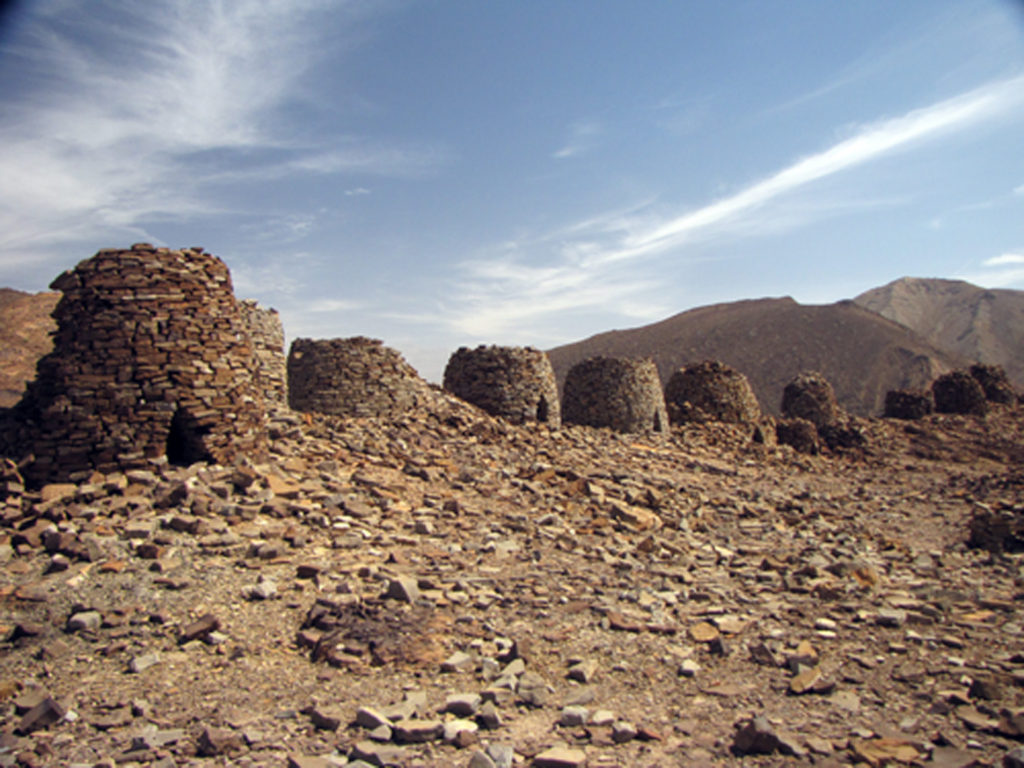Al Dhahirah – A desert plain with a UNESCO World Heritage Archaeological Site – The Bat Tombs (4000 BC)
The Dhahirah region is a desert plain, which extends from the foothills of the Western Hajjar Mountains towards the Empty Quarter. Jebel al Khawr, a mountain peak in Yanqul, separates it from the Dakhliya region.
This region is definitely more low-key than the others, but with its many wadis or oases, it provides for a good camping site. Ibri is one of the main towns in the region and is famous for its historic forts as well as archaeological findings.
Ibri is one of the oldest inhabited areas in Oman. Ibri Castle, a remnant of the original walled city, is a robust structure built to withstand time and a harsh environment. Within its walls is the beautifully restored Friday Mosque, which continues to be used by townspeople to this day. Other important forts include the Jebel al Shahshah Fort and the Al Aswad Fort.
In 1976 a team of Danish archaeologists discovered what has come to be known as the Bat Tombs, an ancient burial ground believed to date back to 4,000 BC. This is the second site in Oman to be listed as a UNESCO World Heritage Site. The southern section of the site consists of “beehive” tombs, which contain up to five graves in each, while another section contains tombs, which appear to have been communal graves. In both types of tombs, red pottery similar to the “Jumdat Nasr” from Iraq was found. The Bat Tombs constitute one of the most complete collections of settlements and necropolises of the third millennium BC.

Buraimi was once a quiet town bordering Al Ain in the UAE and Oman, but has now developed into a thriving industrial centre and its old fort stands witness to this change. In addition to its many forts and historic ruins including Al Araqi, Al Ghabi and Al Khandaq, the high point of this region is the Wednesday Souk, which is run entirely by women. The area’s handicrafts include pottery, leatherwork, saddlebags, palm weaving and wickerwork.
